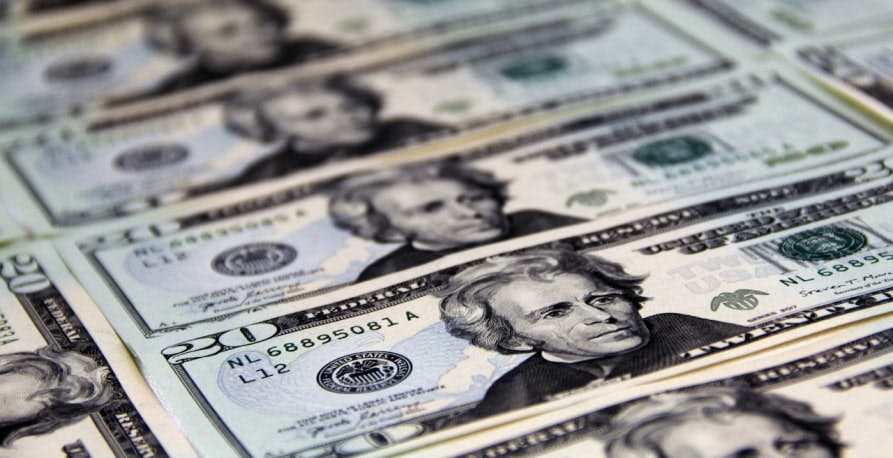ESG / CSR
Industries
What is the SEC and How is it Related to the Environment?



The U.S. is trying to catch up in the race to reduce emissions and fight against climate change, depicted especially in their recent climate bill and California's new stringent legislation. However, it begs the question – what programs or measures have been a part of the United States's environmental strategy all along?
👉 How does the SEC, otherwise known as the U.S. Securities and Exchange Commission, help the U.S. to establish and adjust both new and existing environmental policies?
The US. Securities and Exchange Commission (SEC)
What is the Securities and Exchange Commission (SEC)?
The U.S. Securities and Exchange Commission oversees organizations and individuals in the securities markets (securities exchanges, brokerage firms, dealers, investment advisors, and investment funds).
Overall, the SEC aims to ensure safety to investors through various means by dealing with security issues for potential and concurrent investors. In order to perform a Securities and Exchange Commission certified business, an organization or individual must register via mail or online.
👉 To be noted: The Securities and Exchange Commission works as a team with federal and state law enforcement agencies to make sure that all actors comply with state and federal securities laws.
When did the SEC History start?
The Securities and Exchange Commission started back in 1934, mostly due to the aftermath of the stock market crash that happened in 1929 during the Great Depression, in order to :
- restore investor confidence
- establish security for those seeking external financial opportunities by providing full disclosures that help to protect against fraud.
The primary purpose of the SEC was to fight against market manipulation. After creating the Securities Exchange Act in 1934, the U.S. Securities and Exchange Commission enforced:
- the Securities Act of 1933
- the Trust Indenture Act of 1939
- the Investment Company Act of 1940
- the Investment Advisers Act of 1940
- the Sarbanes–Oxley Act of 2002.
⚠️ After the Great Recession of 2008, the Securities and Exchange Commission also announced new rules to reduce volatility in turbulent markets. Many cases were investigated in order to prevent individuals from manipulating markets with false rumors regarding financial institutions.

What are the main goals of the U.S. Securities and Exchange Commission?
In general, the SEC, or the U.S. Securities and Exchange Commission, has three specific goals:
- to protect investors
- establish and maintain fair and effective regulations throughout the market
- encourage capital formation.
In order to understand the motives behind the SEC, it's important to understand the history. Back in late 1929 when the stock market crashed, the public lost general confidence in U.S. stock markets, and it was up to the government to re-establish that trust amongst Americans. After several hearings held by the U.S. Congress as an attempt to rectify the economic crises that followed the Great Depression – Congress held hearings to identify the problems and search for solutions.
While the U.S. Securities and Exchange Commission functions on three basic pillars, it can be broken down more clearly into two main goals. One, being that the SEC demands companies seeking public exposure and potential investors to be transparent regarding the products and services they sell, and to clearly delineate the potential risks of said products and services. Two, the SEC asks all those who trade securities such as brokers and dealers to treat investors with respect, and again – clearly illustrate all the potential consequences of said investment.
Now that you understand the main mission of the U.S. Securities and Exchange Commission, how does the SEC work?

How does the SEC work?
The SEC protects investors by monitoring entities that aim to work with investors, such as securities exchanges, dealers, firms for brokers, investment advisors, or various other investment funds. The SEC encourages disclosure through various, established regulations in order to ensure fair trade and protection against fraud.
The U.S. Securities and Exchange Commission's organization
The first division of the U.S. Securities and Exchange Commission aims to make sure that investors are given the necessary information to understand their potential investment and make an erudite decision.
The second division of the SEC is to investigate cases that don't adhere to the safety goals implemented by the SEC for investors, and proceed with court orders and other administrative processes if necessary.
The third division of the SEC monitors investment companies, their insurance policies, and investment advisors.
The fourth division of the U.S. Securities and Exchange Commission prioritises the observation of economic data to ensure investor protection.
Finally, the fifth division of the SEC strives for equality and safe trading amongst various markets.
Out of all twenty three offices belonging to the SEC, The Office of the Whistleblower remains as one of the most predominant and powerful sources for the SEC to promote their values regarding security through enforcement of the law. This specific office was created after the Dodd-Frank Wall Street Reform and Consumer Protection Act of 2010 – an act passed following the financial crisis of 2007-2008 that left many businesses in peril, similar to the Great Depression. This act strived to improve the U.S. financial system by promoting safety for consumers paying taxes.
👉 Third party observers can help the SEC achieve their goal of protecting investors and consumers from fraud as well through the SEC whistleblower program. This program is named after the infamous term, “whistleblower” or someone who “tattle tales” or “squeals” on someone else. People who report fraudulent behavior can sign up for this reward program with the SEC and be entitled to up to 30% of the total penalty fees the corrupt business or individual must pay per request of the SEC's final decision.
EDGAR 4
Investors can seek the help of the U.S. Securities and Exchange Commission through an online database, where potential investors can have wide-spread access to statements proving business registration, as well as financial reports and other data demonstrating future financial security if the investor is to partake in a business collaboration with said company. This database used by investors is better known as EDGAR 4.
EDGAR 4, short for Electronic Data Gathering, Analysis, and Retrieval system – is the automatic collection, approval, and sharing system used for companies who must file forms per request of the SEC. EDGAR 4 is used to increase user-friendliness and ease of filing for businesses to improve the overarching availability of potential databases to share with potential investors – ultimately, for the sake of the potential investor's protection.
👉 Basically, EDGAR 4 helps the SEC achieve their primary goals faster, and easier – and benefits both the U.S. Securities and Exchange Commission, the investor, and business in question.
How does the U.S. Securities and Exchange Commission handle court cases in the event of fraud?
In the event that court cases or other various civil suits are necessary, the SEC seeks reform in two different ways.
The first method of rectifying fraudulent behavior is to employ an injunction, which demands a person or enterprise from repeating the same prohibited action again. If this person or entity is to ignore this legal imperative, they can be subject to fines or even face imprisonment.
The second manner in which the SEC will handle fraud is by proceeding with several penalties and demanding that any illegal profits are refunded by the company. In other words, if the third party made a profit off of the investor on illegal terms – the third party will be legally required to give up their acquired funds. The SEC might also establish a court order to suspend any corporate officers or directors from their roles if they are guilty of corrupt action. If necessary, several administrative processes will occur before various internal officers in order to ensure that the suspension of a role or employment is fitting to the case where the investor was taken advantage of.
The SEC clearly does an adequate job of protecting investors, but how does the SEC relate to the environment?
How is the SEC related to protecting the environment?
The SEC doesn't only help to protect investors, but also the environment. This past March, The U.S. Securities and Exchange Commission announced new measures that would require businesses registered under the SEC to disclose their environmental impacts that could potentially impact their business operations.
Examples of specific elements included in these new reports could be how materials used in their businesses affect the environment, operational impact on emissions, and climate-finance metrics. These companies which are obligated to report to the SEC results of operations will ultimately disclose their greenhouse gas emissions as well, which through the use of ESG Data has become a wide-spread method of determining a potential investor's value in financially contributing to a business or project.
Basically, since it's the SEC's job to look out for investors, and investors are more interested in companies that seek to adhere to environmental measures – the SEC is becoming more concerned with these types of companies that investors are more likely to choose.
Through this new demand for information, the SEC can ensure that investors aren't financially contributing to a company that is practicing greenwashing – and that their investment is ultimately doing the environment some type of good, or at least – preventing further environmental harm.
This is precisely how the SEC is related to the environment. Since businesses and overall increased industrialization and human activity are the root cause of today's excessive emissions, the U.S. Securities and Exchange Commission is now holding businesses accountable for their environmental impact for the sake of protecting investors.
The SEC is now helping both investors and the environment, but is there anything they can change to do an even better job than they already are?
What could the U.S. Securities and Exchange Commission do better to protect both investors and the planet?
The SEC is a self-aware organization always seeking improvements for the sake of their investors. In fact, they have already clearly delineated their areas for improvement. For instance, the SEC wants to enhance their knowledge on the market so that they can respond better to potential business risks taken by investors. The SEC also recognises that some of their old regulations don't coincide with the new global market, which continues to grow at an unprecedented rate.
Therefore, the U.S. Securities and Exchange Commission is committed to improving their rules and regulations to match the newfound incentive to ameliorate the current measures implemented to protect the environment and prevent fraudulent behavior.
The world is continuing to transition to the use of digital media and the internet for just about everything – such as with cryptocurrencies. The SEC recognises the increasing risk through cyber-systems, and is motivated to increase data collection and storage to prevent any potential consequences.
The U.S. Securities and Exchange Commission is doing what so many other policies, organizations, and individuals around the world should: they are striving to improve alongside the newfound circumstances. The SEC isn't just looking out for the investors that stand behind them, but looking forward towards the global predicament of climate change.
What about Greenly?
If reading this article about the SEC and how it helps the environment has made you interested in reducing your carbon emissions to further fight against climate change – Greenly can help you!
Greenly can help you make an environmental change for the better, starting with a carbon footprint assessment to know how much carbon emissions your company produces.




